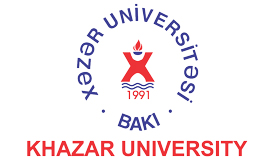International Conference on Materials Science and Research
November 16-18, 2017 Dubai, UAE
Prediction of Safe Welding Conditions to avoid Cold Cracking of High Strength Steel Welded Structures
Faculty of Engineering, Cairo University, Egypt
The current work presents a comprehensive study of the factors affecting cold cracking of welds to find out how can we produce crack-free joints. The complicated interrelations between these factors are analyzed. The Implant cracking test is developed to quantitatively study the effect of each factor on the susceptibility of steel to Heat Affected Zone (HAZ) cold cracking. Implant static fatigue limit (RSFL) can be determined experimentally for the given material and welding conditions. To avoid cold cracking in weld (HAZ), RSFL must be greater than the stresses arising in the welded joint (RS). Implant weldability tests were carried out on C-Mn and High Strength Low Alloy steels (HSLA) with a carbon equivalent (CE) ranging from 0.38 to 0.48% and 0.52 to 0.68%, respectively. Static fatigue limit is modeled as a function of base metal chemical composition including carbon equivalent, welding variables and weld metal diffusible hydrogen content. HAZ hardness is a function of base metal chemical composition and welding variables. Static fatigue limit can be modeled as a function of HAZ hardness and weld metal diffusible hydrogen.
Direct determination of stresses arising in welded joints, either analytically or experimentally, is complicated and difficult to obtain accurately. Here, an indirect technique is proposed and applied. In our experiments two different types of steels: St 52-3 and 17Mn4 with thicknesses 12 mm and 20 mm are used. Rigid steel structures are designed and welded using wide scale of welding parameters and electrode coatings. For each joint type, static fatigue limit values are calculated, and sections of the welded joints are examined microscopically for cracking. For each specified joint, the crack/no crack limiting value of RSFL is taken as the critical RS value. The critical static fatigue limits for butt-, T- and cruciform joints are determined experimentally. Nomograms are constructed to predict safe welding conditions to avoid cold cracking in single and multilayer welding.



